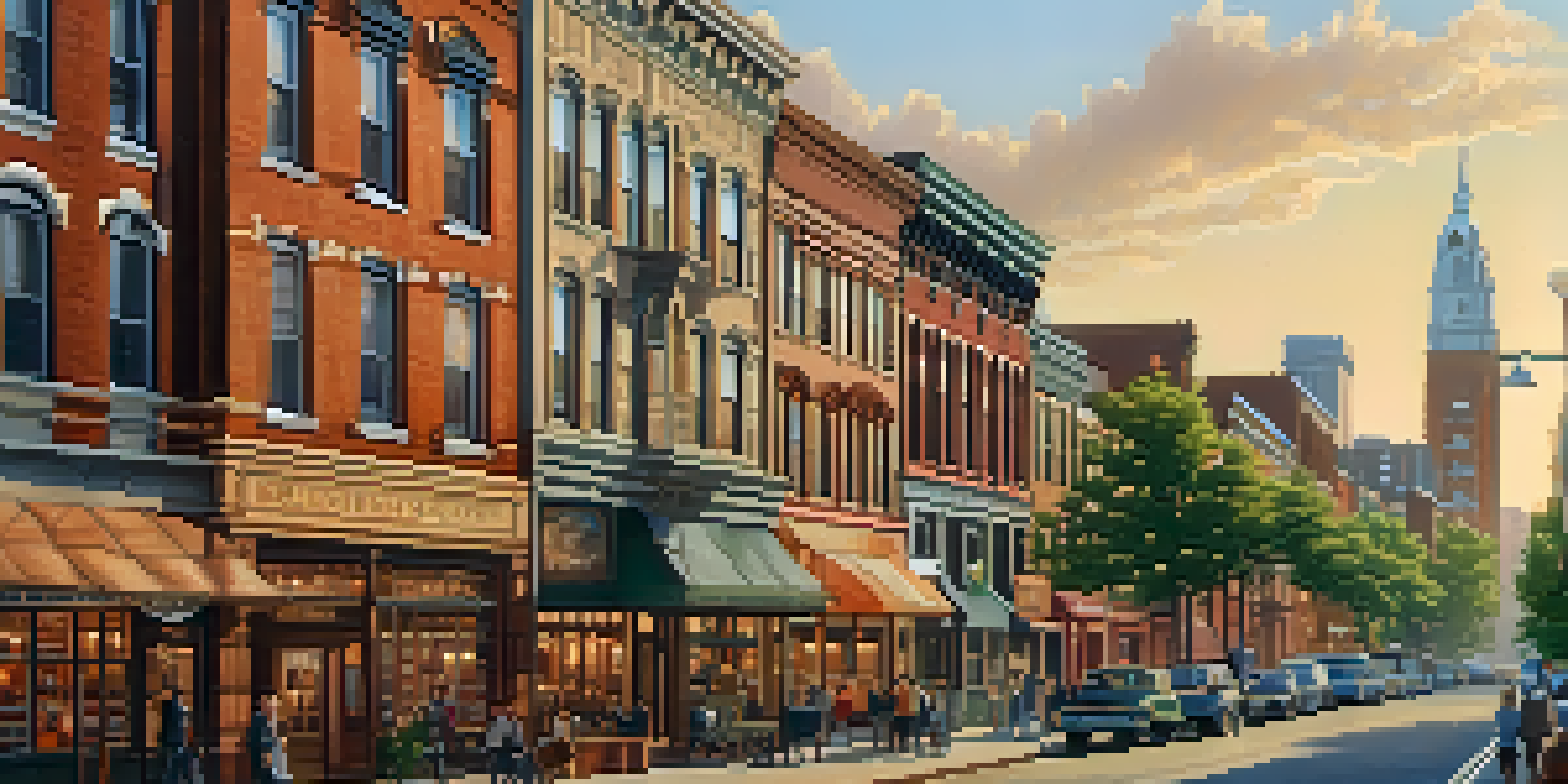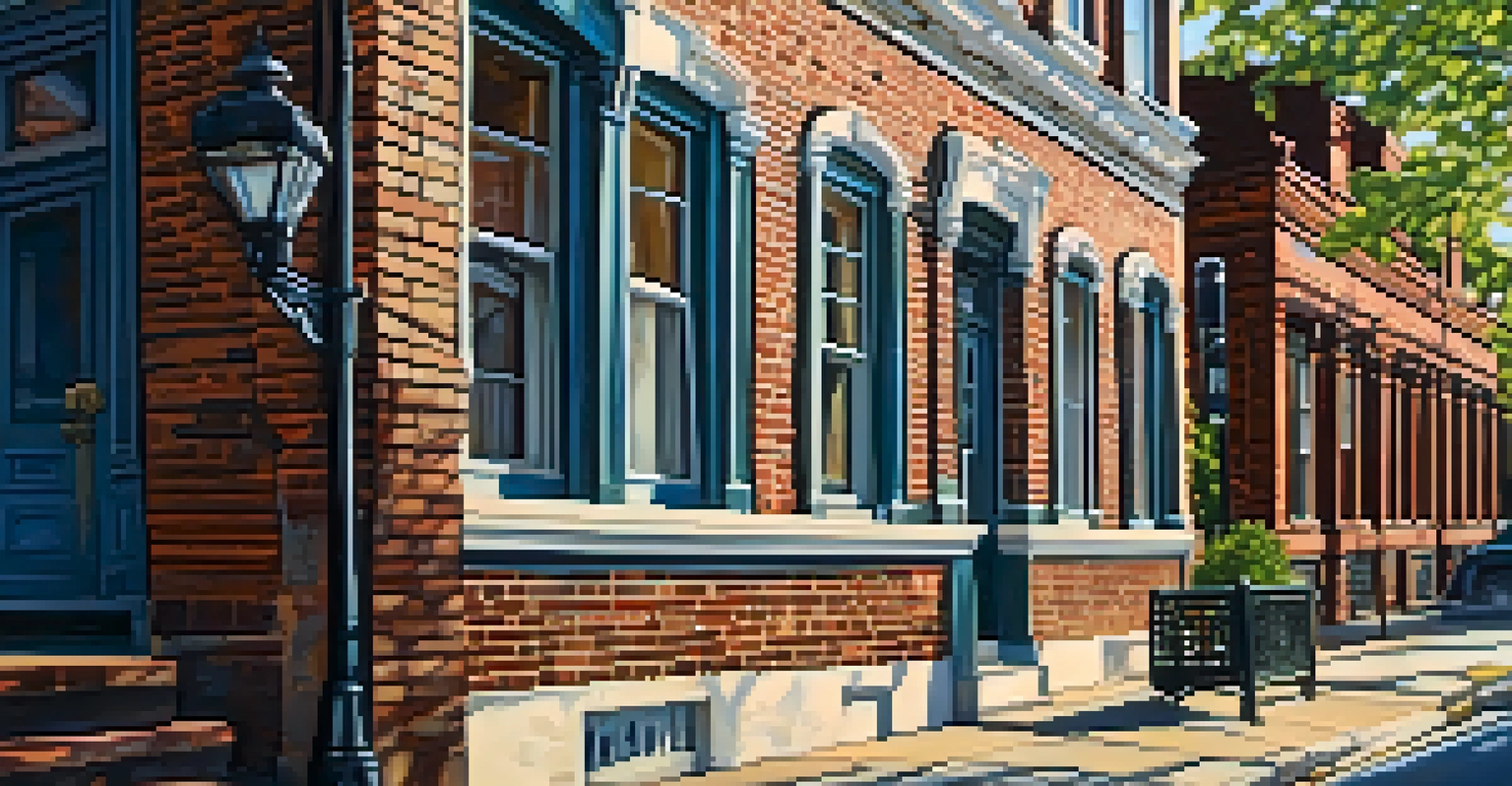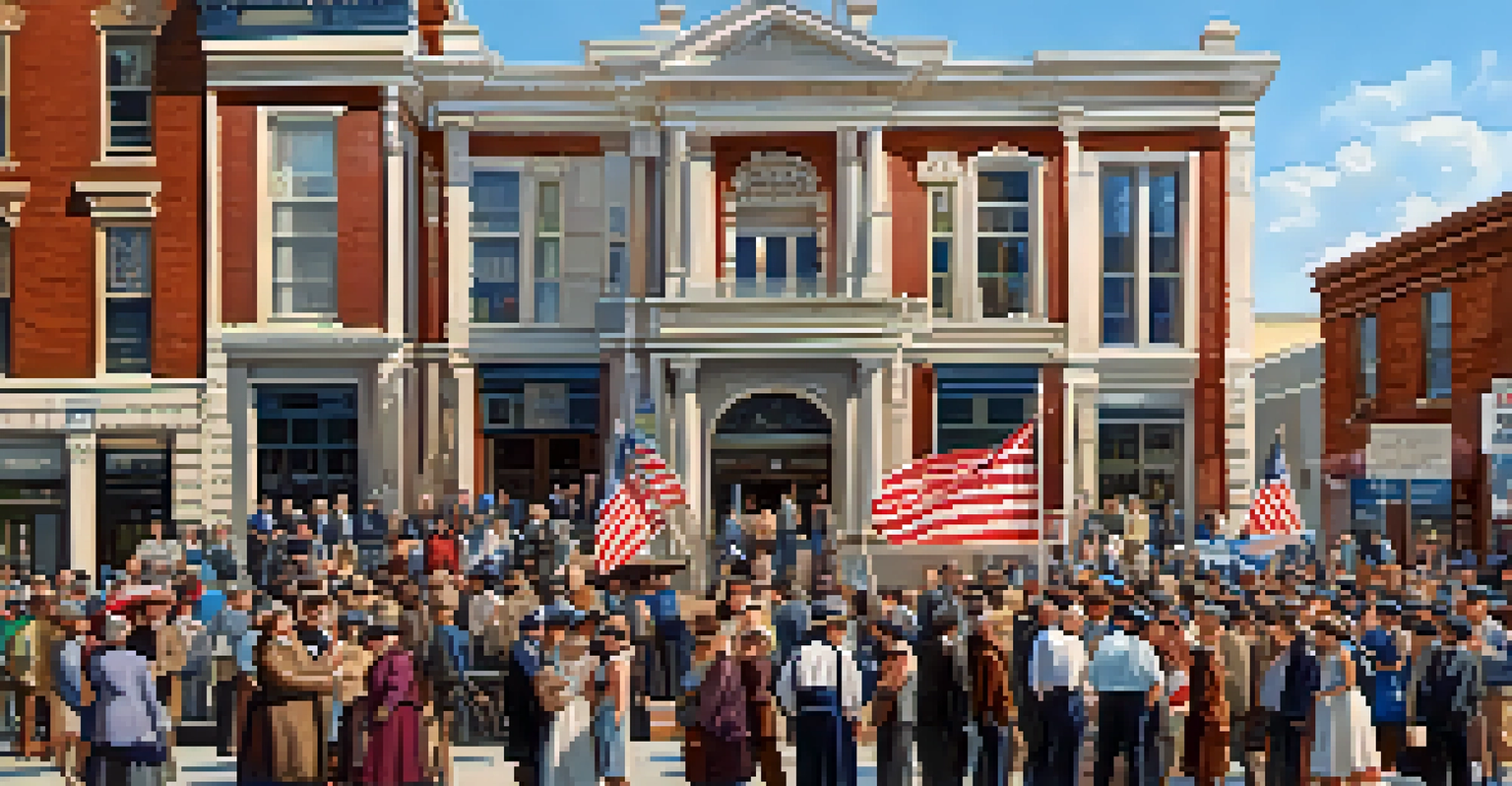Preservation Efforts for Jersey City's Historic Downtown Area

The Significance of Jersey City's Historic Downtown Area
Jersey City's historic downtown area is a vibrant tapestry of culture and history. Its streets tell the stories of generations, showcasing architectural styles that range from Victorian to Art Deco. This blend of influences not only reflects the city's past but also shapes its identity today.
Preservation is not about saving the past, it's about shaping the future.
Preserving this area is crucial not just for its aesthetic appeal but also for maintaining community ties. Local businesses thrive in these historic settings, creating a unique atmosphere that draws residents and visitors alike. The preservation of these structures helps keep alive the spirit of Jersey City.
Moreover, historic districts often play a key role in urban development. As cities evolve, these areas provide a sense of continuity and stability, reminding us of our roots even as we embrace the future. Protecting this heritage is essential for fostering a sense of belonging among residents.
Key Organizations Driving Preservation Initiatives
Various organizations are at the forefront of preservation efforts in Jersey City. Groups like the Jersey City Historic Preservation Commission work tirelessly to ensure that the city's architectural treasures are protected. Their dedication is evident in the numerous projects aimed at restoring and maintaining historic buildings.

Community involvement is a cornerstone of these initiatives. Local residents often collaborate with these organizations to advocate for preservation measures through public forums and events. This grassroots approach not only raises awareness but also empowers citizens to take an active role in safeguarding their history.
Preservation Enhances Community Identity
Maintaining historic structures in Jersey City not only preserves its aesthetic appeal but also fosters community ties and a sense of belonging.
Additionally, partnerships with non-profits and governmental agencies enhance these efforts. By pooling resources and expertise, they can tackle challenges such as funding and regulatory hurdles. Together, they create a robust framework for preserving Jersey City's rich heritage.
Challenges Facing Preservation Efforts
Despite the enthusiasm for preservation, challenges abound. Urban development pressures, such as new construction projects, often threaten historic sites. Balancing growth with preservation requires careful planning and foresight to avoid losing integral parts of the city's character.
History is not a burden on the memory but an illumination of the past.
Financial constraints can also impede progress. Many preservation projects require significant investment, and securing funding can be a daunting task. This is where community support becomes vital, as fundraising efforts and awareness campaigns can help attract necessary resources.
Moreover, navigating the complexities of historic designation can be daunting for property owners. Some may fear that restrictions could hinder their ability to renovate or improve their properties. Clear communication and education about the benefits of preservation can help alleviate these concerns.
Community Involvement in Preservation Initiatives
Community involvement is crucial for the success of preservation efforts. Local residents often serve as the best advocates for their neighborhoods, sharing personal stories that highlight the importance of maintaining historic sites. This collective voice can influence decision-makers and bring attention to pressing preservation issues.
Events like historical walking tours and neighborhood clean-up days foster a sense of pride among residents. These activities not only beautify the area but also strengthen community bonds. When people feel connected to their surroundings, they are more likely to support preservation initiatives actively.
Community Drives Preservation Efforts
Local residents play a crucial role in advocating for preservation through grassroots initiatives and collaborative projects with organizations.
Furthermore, educational programs in schools can instill a sense of appreciation for local history in younger generations. By teaching students about the significance of their city's past, these programs cultivate future advocates for preservation. This ongoing cycle of engagement ensures that the community remains invested in its heritage.
The Role of Local Government in Preservation
Local government plays a pivotal role in shaping preservation policies in Jersey City. Through zoning laws and historical designations, officials can protect significant structures from being altered or demolished. These regulations are crucial for ensuring that the character of the historic downtown area remains intact.
In addition to regulations, government grants and funding can provide essential support for preservation projects. By allocating resources to restore and maintain historic sites, local government demonstrates its commitment to preserving the city's heritage. This financial backing can make a significant difference in the success of various initiatives.
Moreover, public meetings and forums allow citizens to voice their opinions on preservation issues. This transparency fosters collaboration between residents and officials, ensuring that the community's needs and desires are taken into account. A united effort between government and citizens is vital for effective preservation.
Successful Preservation Stories in Jersey City
There are numerous success stories that highlight the effectiveness of preservation efforts in Jersey City. One notable example is the restoration of the Central Railroad of New Jersey Terminal, which has become a focal point for both history enthusiasts and commuters alike. This revitalization not only preserves the building's unique architecture but also enhances its functionality for modern use.
Another inspiring case is the preservation of the historic Paulus Hook neighborhood. Through community-driven initiatives, this area has maintained its charm while adapting to contemporary needs. The balance between preserving history and accommodating growth is a testament to the collaborative spirit of the community.
Government Support is Essential
Local government actions, including regulations and funding, are vital for protecting Jersey City's historic sites and facilitating successful preservation initiatives.
These stories serve as reminders of what can be achieved when passion and dedication come together. They inspire further efforts in preservation and show that with the right approach, historic areas can thrive in today's urban environment.
The Future of Jersey City's Historic Preservation
Looking ahead, the future of Jersey City's historic preservation seems promising, thanks to growing community awareness and involvement. As more residents recognize the value of their heritage, they are more likely to support preservation initiatives. This shift in mindset can lead to increased advocacy and resources for maintaining historic sites.
Technological advancements also play a role in preservation efforts. Digital platforms allow for broader outreach and engagement, enabling preservation organizations to share stories and updates with a wider audience. Social media, in particular, can galvanize support and create a sense of urgency around preservation issues.

Ultimately, the future hinges on collaboration among all stakeholders—residents, organizations, and local government. By working together, they can ensure that Jersey City's historic downtown area not only survives but thrives as a vibrant part of the city's identity for generations to come.